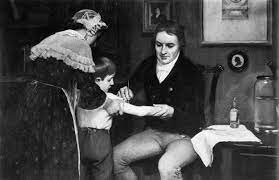
Smallpox was one of the deadliest diseases to affect humankind. Although smallpox had been around for several centuries, it spread globally due to the spread of civilizations, exploration and increased trade between countries.
Smallpox had a mortality rate of 30 per cent and was responsible for more than 500 million deaths worldwide.
One of the first methods to be used against smallpox was called ‘variolation’. In this method, people who had never had smallpox were exposed to a tiny amount of infected material from smallpox sores. They developed smallpox symptoms and had a chance of surviving the infection.
Vaccination is different from variolation. This is because vaccination uses inoculation material from a milder source and hence is safer with a much greater success rate. The discovery of the smallpox vaccine has an interesting back-story.
In 1796 an English doctor named Edward Jenner began to notice that milkmaids who had been infected with ‘cowpox’ seemed to have immunity against smallpox. To prove this, Jenner transferred some material from a cowpox sore on a milkmaid’s hand to the arm of an 8-year-old boy named James Phipps.
A few months later Jenner exposed Phipps to smallpox virus and found that Phipps had become immune. After a few more experiments with cowpox, Jenner published a treatise called, On the Origin of the Vaccine Inoculation in 1801 with the hope that this practice would lead to the annihilation of smallpox.
However, it was only in 1959 that a global initiative to eradicate smallpox was launched by the World Health Organization. After years of coordinated effort and cooperation between countries on a global scale, on May 8, 1980, the World Health Assembly declared the world free of smallpox. Smallpox eradication is considered the biggest achievement in international public health in the history of humankind.
Picture Credit : Google




